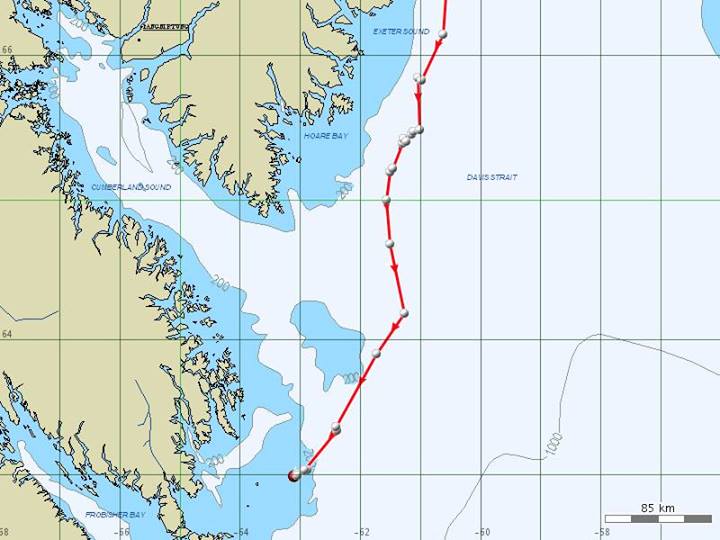Killer Whale Tracker: They’re really on the move now!!
This last few days the Killer Whale pod we’re following have really stepped up the gears! They’ve been heading south relatively fast now along the edge of the Canadian continental shelf, east of Baffin Island, and are no longer stopping for feeding bouts closer to shore. The southerly migration is underway for sure. And I for one am delighted that the remaining satellite transmitter is still working fine!
What’s especially interesting to me is how these killer whales are visiting all of the key areas for marine productivity – special ‘hotspots’ of significant ecological significance. Of course for those who were paying attention in marine ecology 101 class, this isn’t surprising! Marine areas with upwellings, strong currents, ice edges etc do tend to be where relatively high marine production occurs – from plankton through small fish, big fish, and top predators like whales and polar bears. But these killer whales have transited many of what we’ve been part of helping confirm as Canada’s network of ‘Ecologically and Biologically Significant Areas’ – the so-called EBSAs. (see attached map).
The 8-nation Arctic Council (via their PAME working Group) has recently published the circumarctic report on these Ecologically Important Areas , and nations, industry and other stakeholders will now be considering how to provide elevated safeguards/protection for these key sensitive areas.
WWF works at national levels and at the circumarctic level to help ensure that the right information is brought forward and used to inform effective laws, policies and practices, thereby making sure that these key areas remain unfettered by adverse impacts from risks arising from human activities in these regions. Protecting these key areas is really important for all of these marine species, not just killer whales and polar bears of course.



